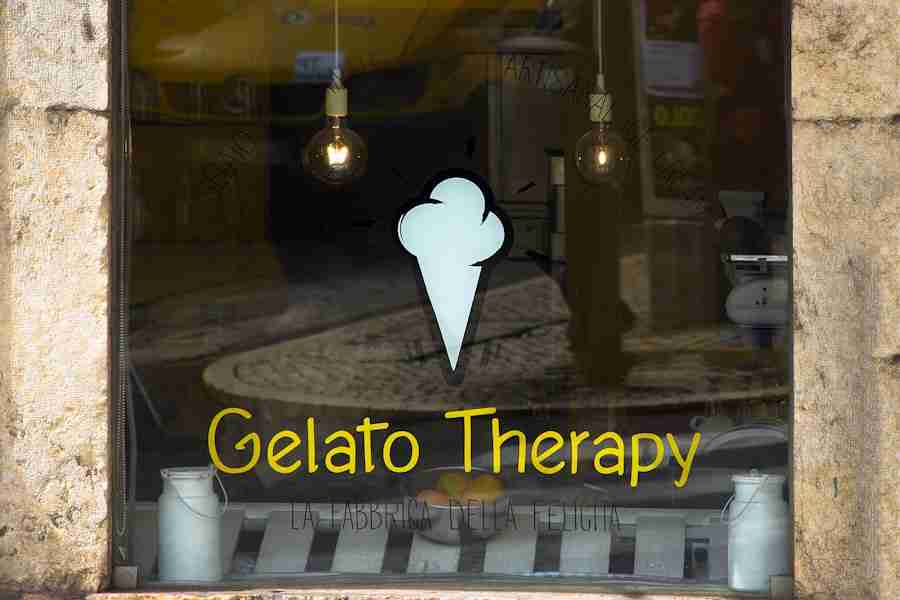Healing therapy encompasses a broad spectrum of practices aimed at restoring balance and promoting well-being in individuals. At its core, healing therapy is rooted in the belief that the body possesses an innate ability to heal itself, and that various therapeutic modalities can facilitate this process. This approach often integrates physical, emotional, and spiritual dimensions, recognizing that health is not merely the absence of disease but a holistic state of being.
The origins of healing therapy can be traced back to ancient civilizations, where practices such as herbal medicine, acupuncture, and spiritual rituals were employed to treat ailments and enhance overall health. In contemporary settings, healing therapy has evolved to include a variety of techniques, from traditional practices to modern innovations. It often involves a collaborative relationship between the practitioner and the individual seeking healing, emphasizing personalized care tailored to the unique needs of each person.
This relationship is fundamental, as it fosters trust and openness, allowing individuals to engage more fully in their healing journey. As society increasingly recognizes the importance of mental and emotional health alongside physical well-being, healing therapy has gained traction as a valuable complement to conventional medical treatments.
Key Takeaways
- Healing therapy focuses on addressing the root causes of physical and mental health issues, rather than just treating symptoms.
- The benefits of healing therapy include reduced stress, improved emotional well-being, and enhanced physical health.
- Types of healing therapy include acupuncture, reiki, massage therapy, and aromatherapy, among others.
- The science behind healing therapy involves the release of endorphins, reduction of inflammation, and stimulation of the body’s natural healing processes.
- Healing therapy can improve mental health by reducing anxiety, depression, and PTSD symptoms, and promoting a sense of calm and balance.
The Benefits of Healing Therapy
The benefits of healing therapy are manifold, extending beyond mere symptom relief to encompass profound transformations in an individual’s overall quality of life. One of the most significant advantages is the promotion of relaxation and stress reduction. Many healing therapies, such as massage, meditation, and yoga, activate the body’s relaxation response, which can lower cortisol levels and reduce anxiety.
This physiological change not only alleviates immediate stress but also contributes to long-term resilience against stress-related disorders. Moreover, healing therapy can enhance emotional well-being by providing individuals with tools to process their feelings and experiences. Techniques such as art therapy or music therapy allow for creative expression, which can be particularly beneficial for those who find it challenging to articulate their emotions verbally.
Engaging in these therapeutic modalities can lead to increased self-awareness and emotional intelligence, empowering individuals to navigate life’s challenges with greater ease. Additionally, many people report improved relationships with others as they learn to communicate more effectively and develop empathy through their healing experiences.
Types of Healing Therapy

Healing therapy encompasses a diverse array of modalities, each with its unique approach and benefits. One prominent type is energy healing, which includes practices such as Reiki and Healing Touch. These therapies operate on the premise that the body has an energy field that can be influenced by external energies.
Another significant category is body-centered therapies, which focus on the physical aspects of healing. Techniques such as acupuncture, chiropractic care, and massage therapy fall under this umbrella.
Acupuncture, for instance, involves inserting fine needles into specific points on the body to stimulate energy flow and alleviate pain. Similarly, chiropractic adjustments aim to realign the spine and improve overall bodily function. These therapies not only address physical ailments but also contribute to emotional well-being by releasing tension stored in the body.
Psychological therapies also play a crucial role in healing therapy. Approaches such as cognitive-behavioral therapy (CBT) and mindfulness-based stress reduction (MBSR) help individuals address mental health challenges by changing negative thought patterns and fostering present-moment awareness. These therapies can be particularly effective for conditions such as depression and anxiety, providing individuals with practical strategies to cope with their symptoms.
The Science Behind Healing Therapy
The scientific exploration of healing therapy has gained momentum in recent years, leading to a deeper understanding of how these practices can influence health outcomes. Research has shown that many healing modalities can elicit measurable physiological changes in the body. For instance, studies on mindfulness meditation have demonstrated its ability to reduce stress markers such as cortisol levels while enhancing immune function.
This evidence supports the notion that mental states can significantly impact physical health. Furthermore, neuroimaging studies have revealed that practices like yoga and meditation can alter brain structure and function. Regular engagement in these activities has been associated with increased gray matter density in areas of the brain related to emotional regulation and cognitive processing.
This suggests that healing therapies not only provide immediate relief but may also contribute to long-term changes in brain health. The placebo effect is another area of interest in the scientific community regarding healing therapies. Research indicates that belief in the efficacy of a treatment can lead to real physiological changes in the body.
This phenomenon underscores the importance of the mind-body connection in healing processes and highlights how psychological factors can influence physical health outcomes.
How Healing Therapy Can Improve Mental Health
Healing therapy offers a multifaceted approach to improving mental health by addressing both symptoms and underlying issues. One of the primary ways it achieves this is through fostering a sense of connection—both with oneself and with others. Many therapeutic modalities encourage individuals to explore their thoughts and feelings in a safe environment, promoting self-discovery and personal growth.
For example, group therapy settings provide opportunities for individuals to share their experiences and learn from one another, reducing feelings of isolation often associated with mental health struggles. Additionally, healing therapies often incorporate mindfulness practices that cultivate present-moment awareness. Techniques such as deep breathing exercises or guided imagery can help individuals manage anxiety and depressive symptoms by grounding them in the here and now.
This shift in focus allows individuals to step back from overwhelming thoughts and emotions, creating space for clarity and calmness. Over time, these practices can lead to improved emotional regulation and resilience against future stressors. Moreover, many healing therapies emphasize self-care as a vital component of mental health maintenance.
Engaging in regular practices such as yoga or journaling encourages individuals to prioritize their well-being amidst life’s demands. This proactive approach not only enhances mental health but also fosters a greater sense of agency and empowerment over one’s life circumstances.
Healing Therapy for Physical Health

The application of healing therapy extends significantly into the realm of physical health, where various modalities have been shown to alleviate pain, enhance recovery from illness, and improve overall bodily function. For instance, massage therapy is widely recognized for its ability to relieve muscle tension and promote relaxation. Research has demonstrated that regular massage can reduce chronic pain conditions such as fibromyalgia and lower back pain by increasing circulation and releasing endorphins—natural pain-relieving chemicals produced by the body.
Acupuncture is another notable example of healing therapy with a strong foundation in physical health benefits. This ancient practice has been extensively studied for its effectiveness in treating various conditions, including migraines, arthritis, and even digestive disorders. By stimulating specific points on the body, acupuncture aims to restore balance within the body’s energy system, leading to improved physical function and reduced discomfort.
Furthermore, integrative approaches that combine conventional medical treatments with healing therapies have gained popularity in recent years. For instance, cancer patients often benefit from complementary therapies such as aromatherapy or guided imagery alongside their medical treatments. These integrative strategies not only help manage side effects but also enhance patients’ overall quality of life during challenging times.
Integrating Healing Therapy into Daily Life
Incorporating healing therapy into daily life can be a transformative experience that enhances overall well-being. One effective way to achieve this is by establishing a consistent routine that includes various therapeutic practices tailored to individual preferences and needs. For example, setting aside time each day for mindfulness meditation or gentle yoga can create a sanctuary for self-reflection and relaxation amidst a busy schedule.
Additionally, integrating elements of healing therapy into everyday activities can foster a greater sense of mindfulness and presence. Simple practices such as mindful eating—paying attention to the flavors and textures of food—can transform mealtime into a nourishing ritual rather than a rushed obligation. Similarly, taking short breaks throughout the day for deep breathing exercises or stretching can help alleviate tension and promote mental clarity.
Community involvement also plays a crucial role in integrating healing therapy into daily life. Participating in group classes or workshops focused on various therapeutic modalities fosters connection with others who share similar interests in well-being. This sense of community not only provides support but also encourages accountability in maintaining healthy habits.
Finding the Right Healing Therapy for You
Choosing the right healing therapy involves a thoughtful exploration of personal needs, preferences, and goals. It is essential to consider what aspects of well-being one wishes to address—be it physical pain management, emotional support, or spiritual growth. Engaging in self-reflection can help clarify these intentions and guide individuals toward suitable therapeutic options.
Consulting with healthcare professionals or experienced practitioners can also provide valuable insights into which modalities may be most beneficial based on individual circumstances.
This exploratory approach ensures that individuals find a practice that resonates with them on multiple levels.
Ultimately, finding the right healing therapy is a personal journey that may involve trial and error. It is essential to remain open-minded and patient throughout this process, recognizing that healing is not always linear but rather a dynamic interplay between various factors influencing well-being. By embracing this journey with curiosity and compassion, individuals can discover transformative practices that enhance their lives holistically.

